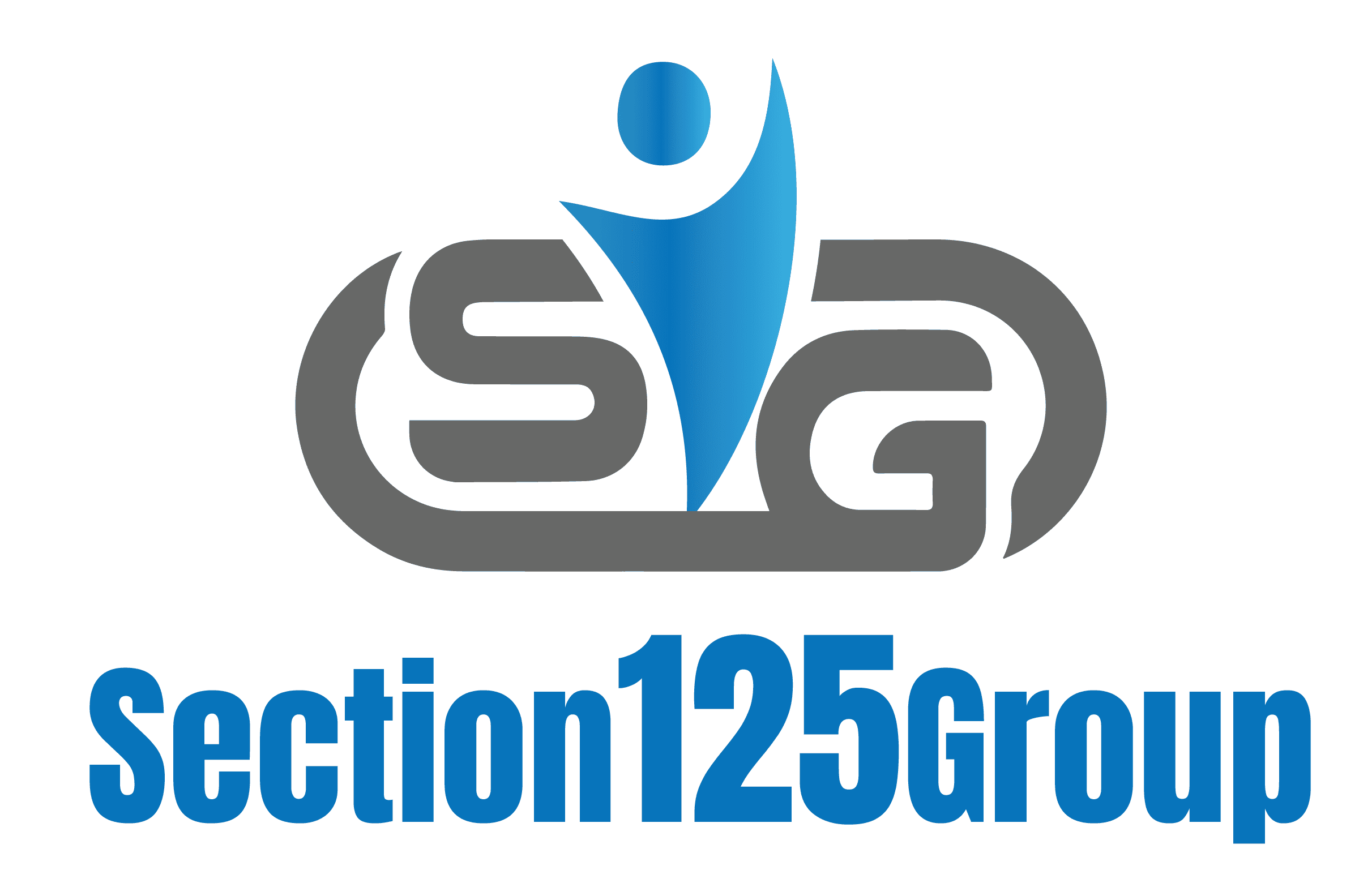In today’s economy, every dollar counts. Whether you’re managing a quick-service restaurant, leading a home health agency, or running a fast-growing startup, finding ways to cut costs without cutting corners is the key to staying competitive. If you’ve never taken full advantage of the employee retention tax credit (ERTC), you’re leaving serious money on the table—possibly $1,000 or more per employee annually.
Here’s the good news: this isn’t some complex tax loophole only accessible to large corporations. With the right strategy and compliance partner, small- and mid-sized businesses can now unlock real savings while boosting employee satisfaction and loyalty.
At section125group, we’re on a mission to show you how. And it starts with our upcoming webinar, “Reduce Taxes & Retain Top Talent” This free, online event will show you exactly how tax credits like ERTC can fuel your business growth without increasing your payroll budget.
Let’s break down how it works—and why now is the time to act.
What Is the Employee Retention Tax Credit (ERTC)?
The Employee Retention Tax Credit is a government-backed incentive designed to help businesses keep workers employed during difficult times. Originally introduced under the CARES Act, it allows eligible employers to receive a refundable payroll tax credit for qualified wages paid to employees.
In simple terms: if you retained employees during tough economic periods or continued operations during COVID-19 disruptions, you may be entitled to significant tax refunds, often between $600 and $1,000 per employee annually.
Even if your business didn’t claim ERTC before, there’s still time. And that’s where section125group steps in—with compliant, risk-free employee retention solutions tailored to your industry.
Why Is This Relevant in 2025?
While ERTC was heavily talked about during the pandemic, many business owners missed out on these savings due to:
- Confusion over eligibility.
- Fear of compliance mistakes.
- Lack of expert guidance.
But updated regulations and new employee retention tax credit updates have made it easier than ever to claim the credit, even retroactively.
In 2025, many businesses are still eligible to claim refunds from past tax years, and the savings are real. According to IRS guidelines, amended filings for qualified wages paid during 2020 and 2021 are still accepted. That means there’s still a window of opportunity to reclaim thousands of dollars—if you know how to do it properly.
This is exactly what we’ll cover in our upcoming free webinar, designed specifically for:
- Starting firms
- Quick-service restaurants
- Home health and staffing companies
- Franchise operators
The Math Behind the Savings
Let’s put the numbers into perspective. A restaurant with 30 employees may qualify for:
- $600–$1,000 per employee annually in tax credits.
- That’s $18,000–$30,000 in potential savings per year.
For staffing agencies, those numbers are even higher due to frequent workforce rotations. Whether you’re employing full-time staff or managing part-time shifts, these credits can add up fast and go straight back into your business.
When paired with section125group’s compliant benefits planning, your business can reinvest these savings into:
- Hiring and training talent.
- Expanding operations.
- Offering better perks and health options.
- Staying competitive in a high-turnover market.
Where Most Businesses Miss Out
It’s easy to assume you’re too small or not eligible. That’s exactly the myth our webinar is designed to debunk.
Here’s where many employers lose out:
- Thinking the credit expired
- The truth: You can still file amended returns for qualified quarters.
- The truth: You can still file amended returns for qualified quarters.
- Believing PPP disqualified them
- Many businesses that received PPP loans may still qualify for ERTC.
- Many businesses that received PPP loans may still qualify for ERTC.
- Trying to self-file without expert help
- Filing incorrectly or missing IRS requirements can delay or disqualify your refund.
- Filing incorrectly or missing IRS requirements can delay or disqualify your refund.
That’s why it’s critical to get advice from trusted compliance professionals who specialise in employee benefit tax strategies. And that’s exactly what section125group offers.
How Does Employee Retention Credit Affect Tax Return?
This is one of the top questions business owners ask—and for good reason. Nobody wants a surprise when tax season hits.
Here’s a quick breakdown:
- The ERTC is not considered taxable income, but it does require an adjustment to wage deductions on your tax return.
- If claimed retroactively, it’s processed as a refund from the IRS, not as a direct deduction from your business income.
- There may be impacts on prior tax filings, which is why accurate documentation and expert filing support are key.
Our webinar will walk you through how to make these adjustments correctly and legally—no guessing games.
What to Expect in the Webinar
Our upcoming free webinar, “Reduce Taxes & Retain Top Talent,” is designed to give employers a step-by-step roadmap for using tax credits to:
- Save up to $1,000 per employee annually.
- Avoid common ERTC filing mistakes.
- Learn how to apply updated IRS guidance to past wages.
- Pair tax credits with benefit strategies for long-term retention.
Details:
- Time: Join at Noon CST and Join at 3:00 PM CST
- Date: Wednesday, June 11th, 2025
- Location: 100% online – join from anywhere.
This event is especially timely for restaurants, staffing agencies, and franchise-based businesses where turnover is high and margins are tight. The more employees you have, the more you can potentially save.
Section125group’s Role in ERTC Success
While many firms offer generic filing support, section125group delivers compliance-first planning backed by:
- Industry-specific insight for restaurants, healthcare, staffing, and more.
- A focus on IRS-safe filing strategies to avoid penalties or audits.
- Integrated benefits solutions that go beyond tax credits, like Section 125 Cafeteria Plans and Dependent Care FSAs.
Our goal isn’t just to help you get a refund. It’s to position your business for long-term employee satisfaction and savings.

Real-World Impact of Employee Retention Solutions
Let’s walk through some real-world examples that highlight the value of these solutions (without using case studies, as per instruction):
Restaurants
Restaurants face high turnover, tight margins, and unpredictable revenue cycles. By applying for the ERTC retroactively for 2020 and 2021, a typical QSR chain with 20–40 employees could recover $20,000–$40,000 in credits.
Using these funds, they can:
- Offset hiring and training costs.
- Implement low-cost benefit plans through section125group.
- Offer perks like Dependent Care FSAs that appeal to working parents.
Staffing Firms
Staffing companies often manage hundreds of short-term or rotating workers. These employers typically assume they’re too complex for credits. The opposite is true.
Many staffing firms were essential businesses during the pandemic and are eligible for maximum refunds under updated ERTC guidelines. Pairing these credits with Section 125 plans gives firms:
- Tax savings on pre-tax deductions.
- Payroll simplicity.
- A recruiting edge over competitors who don’t offer benefits.
Home Health and Skilled Nursing Providers
Healthcare employers with high burnout and absenteeism rates can use this credit to:
- Fund retention bonuses.
- Provide tax-free dependent care support.
- Improve their employee value proposition without a direct wage increase.
section125group helps these businesses not just apply, but align their entire benefits structure for retention, tax efficiency, and compliance.
ERTC Updates Employers Need to Know
The IRS continues to issue guidance and clarifications that affect eligibility and filing processes. Here are some of the latest employee retention tax credit updates you need to be aware of:
- Retroactive Claims Are Still Valid:
Employers can amend 941 filings for eligible 2020 and 2021 quarters through April 2024 for 2020 claims and April 2025 for 2021 claims (as per the standard 3-year filing window). - PPP Coordination Is Allowed:
If you received Paycheck Protection Program funds, you can still claim ERTC—but not on the same wages. This requires accurate allocation and documentation. - Wages Must Be Qualified:
Not all employee wages count. ERTC rules exclude wages for owners and some family members. Section125group provides audit-proof validation during filing. - Third-Party Filing Risks Are Increasing:
The IRS has cracked down on companies using aggressive or non-compliant ERTC filing services. That’s why working with a compliant partner like section125group is essential.
We’ll cover all of this in detail during the webinar, so you’ll leave with clarity, not confusion.

Why You Should Act Now
Each day that passes is a missed opportunity to reclaim your tax credits. Businesses who delay may:
- Miss critical IRS deadlines.
- Be forced into rushed, error-prone filings.
- Lose out on tens of thousands in refundable credits.
Think of it this way: If your business had 15–30 employees in 2020 or 2021 and paid them regularly, you could be sitting on $15,000–$30,000 right now.
That money can:
- Boost cash flow.
- Offset inflationary payroll pressures.
- Help you reinvest in operations or employee programs.
Don’t wait for the IRS to close the window. Let section125group help you file correctly, confidently, and on time.
What Sets Section125group Apart?
Here’s how our approach to employee retention solutions stands out:
- Compliance First:
We follow IRS guidelines to the letter—no gimmicks, no grey areas. Your claims are backed by audit-ready documentation. - Industry Expertise:
We know your business challenges. Our team works daily with restaurant owners, staffing directors, and healthcare providers. - Integrated Benefits Strategy:
We don’t stop at tax credits. We help you implement compliant benefit plans that save you money year after year. - Webinar Access:
We’re not just talking about ERTC—we’re showing you how to apply it in your business. Register for our free webinar and take the first step toward smarter savings.
How to Get Started
Getting started is simple. And it begins with our upcoming live webinar.
This isn’t a generic presentation—it’s tailored for fast-growing businesses like yours that need to stay competitive in today’s hiring market.
This is a virtual event, so you can join from anywhere. All you need is a few minutes, a device, and a desire to stop overpaying taxes when credits are available now.
Final Word: The Opportunity Is Real
Every business has one of two paths:
- Keep overpaying and assume you’re not eligible.
- Attend this free webinar and walk away with a path to save up to $1,000 per employee through tax credits.
This is not a vague promise or speculative idea. The employee retention tax credit is real, government-supported, and still available for retroactive claims.
But the key to doing it right lies in two things:
- Education
- Compliance-backed execution|
Let section125group deliver both.
Register for the webinar now and take control of your business savings before the IRS windows close. You’ve worked hard to grow your company—now let your tax credits do the heavy lifting.

